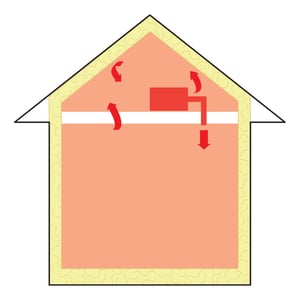The unvented attic space is completely contained within the building thermal envelope.
Non vented attic system.
In order for an un vented roof assembly to function properly the following conditions must be in place.
Because the drying capacity of unvented roof assemblies is inherently lower than vented ones it is especially critical to control built in moisture during construction.
Unventilated attics can help to mitigate energy loss through leaky ducts or ceiling fittings.
A fundamental requirement of an unvented attic assembly is the use of air impermeable insulation on the underside of the unvented roof to prevent air infiltration and exclude airborne moisture from the attic.
It is a common misconception that one of the unvented attic problems is that the roof needs to breathe or that the insulation will make the roof hot.
Control construction moisture content with tenting or temporary roofing when necessary.
The energy savings touted by unvented attics can be as high as 20.
Un vented roofs operate on the principle that moisture entering the roof assembly can be controlled and that there is no need for venting to control moisture accumulation.
Unvented attic assemblies spaces between the ceiling joists of the top story of the roof rafters shall be permitted if all of the following conditions are met.

